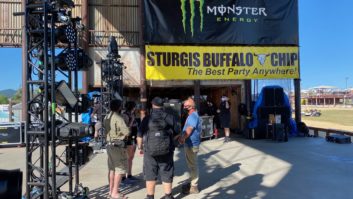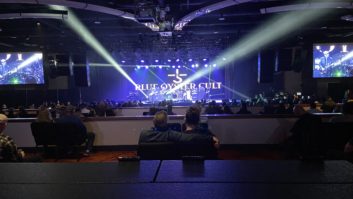Most audio engineers are familiar with the term snapshot memory, a method by which all (or at least most) of the settings of a digital console are recorded and stored for later recall. Some of the younger audio engineers hanging ‘round here may not realize where the concept originated.
I witnessed the tail end of “analog snapshot memory” at one of my earliest gigs with Blue Öyster Cult when I saw an engineer at a festival taking photos of the mixing desk with a Polaroid instant camera after soundcheck. The idea was that he’d be able to recall his settings after I mixed our set using the same desk (those in the upper echelons of audio carried their own mixing consoles; not so much for me and my compadres). It was an interesting and smart idea, and though I never carried an instant camera (do cell phones count?), I did my share of artist’s tape and Sharpie marks near the gain knobs so that at show time I could at least recall my preamp settings from soundcheck.
Quaint, right? I imagine that Gutenberg thought the same thing of stone tablets, hammer and chisel.
Read more Mix Blog Live: Is It Live, Or Is It???
These days I see an analog desk maybe once a year, in which case my reaction is simply that if there’s a support act, they can have the leftover channels that I’m not using. Analog snapshot memory is a thing of the past, relegated to the shelves like so many DeltaLab Effectron II delay units.
Or is it?
I love digital desks for the recall-ability, and no one can debate the fact that when you’re at a festival sharing a desk with four bands and have 15 minutes for changeover, it’s a beautiful thing to be able to pop a USB drive into a (insert name of your favorite digital desk here) and recall a show. One of the caveats of doing so is whether or not the output routing can be “safed” from recall so that your scene doesn’t accidentally torpedo the entire system and require manual reset of silly stuff like the main output routing, or matrix routing for the delay towers and VIP feed (yikes).
Some older digital desks don’t manage “safe” very well (or at all), and some of the newer ones do weird things if your show was written and saved on a desk with a certain version of firmware, or was tethered to a particular stage box configuration that’s different from that of the current system. As a result, the console might slap you in the face with, “I’m not going to route anything for you until you sort out the mess you just made.”
The other day I was using a desk that I can run a show on, but don’t know well enough to configure system parameters, stage box ID and routing, etc. It’s a bit scary to load a show in such situations because the I/O in my files is almost always tied to the configuration of the previous house (i.e., it’s never the same). If the stage box IDs or output routing change from the current config, I might not be able to return them to the original state, so when I come into a house, I always check with the systems tech to make sure they have a handle on such tasks. “If I mess this up, will you be able to fix it?”
The systems tech the other day told me they’d be at FOH in a few minutes, but gave me the go-ahead to load my show. Before doing so, I accessed the routing page, pulled out my cell phone and took a photo of the screen so that we could easily recall the I/O settings if necessary.
I’ve done this more than a few times recently—for the monitor page on a desk where I can never seem to get the headphone cue to work, or maybe for a desk that’s connected to an unfamiliar digital network. I started thinking I’d keep a folder on my phone with photos like this so I can avoid problems in the future. Or maybe I’ll make 8×10 prints and carry them in a heavy photo album that weighs like rocks in my backpack. I’ll make analog snapshots of digital images from digital gear. Or is it digital snapshots of analog images from digital gear? Good grief. Where’s that Polaroid camera? How analog!







